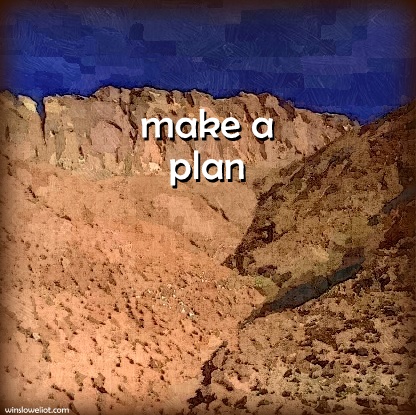
How can stillness help calm anxiety? For some people, being still seems a ticket to heightened fear and panic. They’re sucked into a worried whirlpool of thoughts like, “What if that happens to me?” “What if someone I love falls ill?”. Telling someone to stop watching the news and be still won’t stop the anxiety, because what we imagine can be even more terrifying. Then our mental anxiety requires even more distraction in order to feel a semblance of normalcy. Distraction is the opposite of stillness.
I lived several years in California, where everyone has a disaster-preparedness kit in case of an earthquake. I had one too: I knew where to go, what to do, what to bring and what not to bring if a catastrophe occurred. Non-Californians may see this as an alarming way to live, but actually having a plan is calming and relaxing. Anxious questions of “What if” are responded to by a serene “Then I’ll do such-and-such. I’ll follow this plan.” When we’re armed with a plan, the loop of anxiety subsides.
Anxiety is about having no control over a given situation. But we do have control, even now: We can create a disaster-preparedness kit for ourselves, and for our beloved families, our friends, and the scared strangers who seek a haven nearby. We can know exactly what we will do if disaster strikes (whether it’s illness, poverty, hunger, or despair)—and we can let it go. Then we can become inwardly still, and move through our days and nights, one gentle hour at a time. Like the sky, stillness is always there. Let the waves of anxiety pass by like the shadow of a bird.
